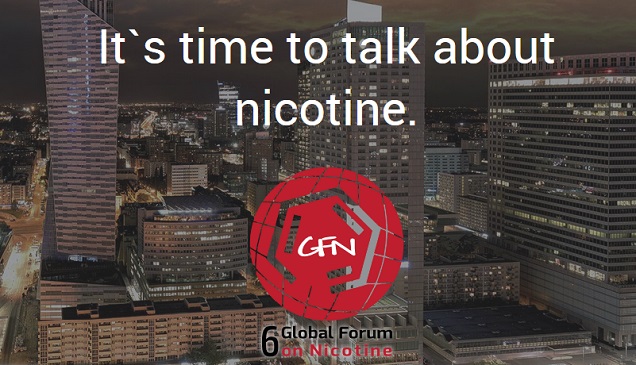
The Global Forum on Nicotine (the GFN, for short) has been one of the major events in the tobacco harm reduction calendar for six years now. Each event sees researchers, policy experts, stop smoking workers, consumers and anybody else with an interest in THR gather to listen to presentations on topics such as vaping, smokeless tobacco and heat-not-burn use, taking place over several days and generally providing enough information to single-handedly bring you up-to-date with the best evidence and latest goings-on in the field.
I went to the GFN last week, and after putting together a full, detailed summary of the talks over at E-Cigarette Direct, as well as having a few days to reflect and process everything, there are some key lessons that stand out. This won’t even scratch the surface of the wealth of information presented, and the longer post is worth checking out if you want to know more, but it will be useful if you just want broad take-aways rather than a complete run-down of what happened.
The question, as ever, is: vaping has the potential to save literally millions of lives around the world, but it’s constantly under threat from regulators and special interest groups, so how do we ensure that smokers have both accurate information about vaping and the ability to buy it in the most effective form for them? In short, what do we need to do to make people aware of the science and offer them sufficient choice as consumers?
These points won’t all address this directly, but offer some useful updates and insights on the core issues surrounding it.
1 – Regulation is a Messy Business
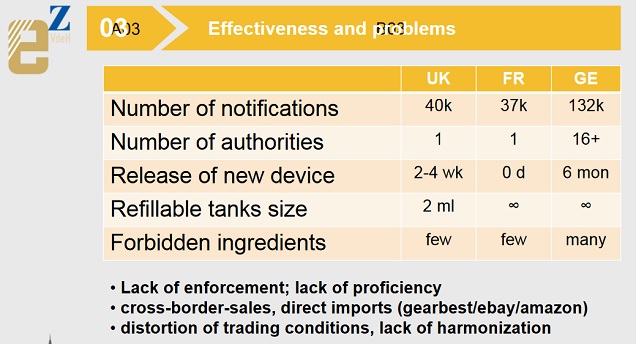
The session on regulations on Friday at the GFN saw experts from across the US and Europe talking about the issues around the world when it comes to regulating e-cigarettes. The take-away message from many of these talks was that regulations are messy and often, overly complicated.
In the EU, Michal Dobracj spoke about the variation in the way different countries have applied the TPD, which is really more of a baseline set of regulations that countries can build on in various ways. One example is how quickly a new device can be released on to the market. In the UK, it’s within a month, in France there’s no waiting period, and in Germany it’s over six months. Similarly, the size limit for refillable tanks in the UK is 2 ml, but other countries have interpreted the law differently, putting no limit on tank size. In short, despite the EU-wide law, there is still a lot of variation between specific countries.
The two best examples of the uncertainty and messiness around regulations come from Marina Foltea’s talk on World Trade Organization (WTO) rules for vaping and Lukasz Gruszczynski’s talk on e-cigarettes under the Framework Convention on Tobacco Control (FCTC). In the former case, the application of the rules regarding “like products” could make it difficult to treat e-cigarettes and cigarettes differently under WTO rules, because they’re plainly in competition with each other on the market. Under the FCTC, the problem is that vaping products could fall under four different categories, and without further guidance there is certain to be differing interpretations around the world.
Throw in the legal challenges to the FDA’s deeming rule and you can see that regulating vaping is rarely straightforward.
2 – Vaping Still Helps Smokers Quit

It shouldn’t be much of a surprise to readers of this blog that vaping helps smokers quit – I went over the evidence in detail in a recent post. But more evidence is always good, and the GFN saw several presenters running through the results of their own research into vaping’s effectiveness for quitting smoking.
Looking through the PDFs for specific talks on the GFN website (a few relevant studies are in Parallel 5) is the best way to get all the details prior to publishing, but suffice it to say that it’s still true that vaping helps smokers quit, and the evidence continues to mount. From Christopher Russell’s presentation on his study showing that JUULs work for quitting to Karolien Adriaens’ run-through of her research into Belgian stop smoking services incorporating vaping into their service.
People who ignore the evidence on this point are looking increasingly flat-Earth-y every day.
3 – Vaping Can Reach Vulnerable Populations

Whether it’s homeless smokers, people with substance use issues, smokers with mental health conditions or indigenous groups with high smoking rates, several of the GFN talks on Friday lunchtime and Saturday morning discussed the ability of vaping to reach vulnerable or otherwise hard-to-reach populations.
This is a perfect example of why having options when you quit smoking is valuable. People with mental health issues, for example, featured in a video during Sarah Pratt’s talk, recounted trying every approach to quit and being unable to, but finding that vaping is the one approach that “clicked” for them. Turning our backs on vaping may also mean turning our backs on smokers like this, left behind by other currently-available approaches.
4 – Nicotine Isn’t the Devil (But it isn’t an Angel Either)
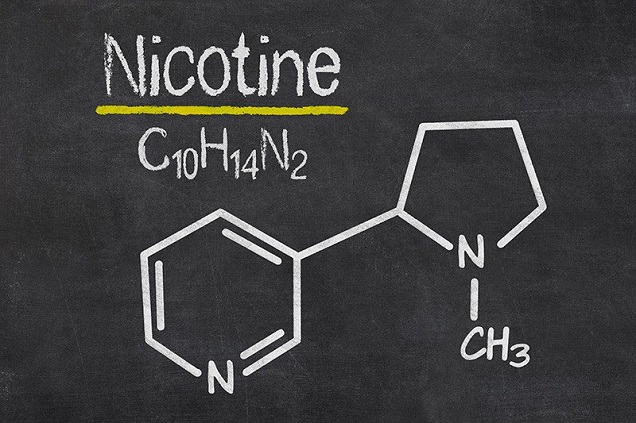
Given that the theme of this year’s GFN was “It’s Time to Talk About Nicotine,” there were plenty of talks on the potential risks of nicotine and its potential benefits.
In brief, nicotine isn’t the devil it’s often made out to be. Neal Benowitz (from Stanton Glantz’s department at UCSF) gave a talk on the potential health risks of the long-term risks of nicotine, and ran through a lot of data on the topic. He pointed out that while long-term nicotine use isn’t harmless, it’s much less harmful than cigarette smoking. However, Brad Rodu’s talk on smokless tobacco the following day did point out data showing basically zero excess risk for snus users, who do of course consume nicotine.
However, claims of actual benefits from nicotine use are pretty common too, from boosting attention and memory to helping with mood and stress. Lynne Dawkins’ talk addressed these claims specifically. She showed that while some benefits to specific areas of memory and attention are backed up by data, generally speaking, when it comes to mood and stress, nicotine likely makes the situation worse.
So while nicotine isn’t the devil, it isn’t an angel either.
5 – The FDA Has Acknowledged the Harm Their Regulations Could Cause
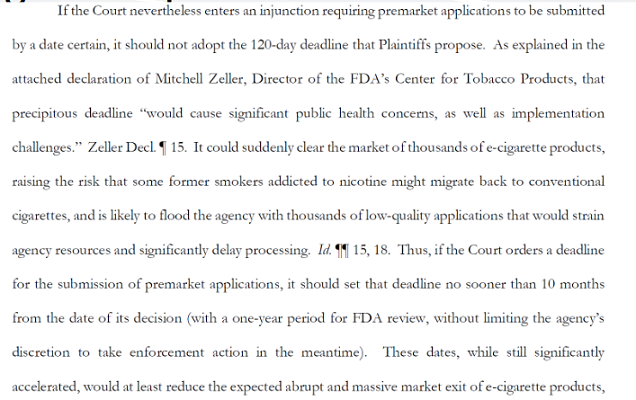
Patricia Kovacevic’s talk on the FDA vaping regulations covered a lot of ground and served as a great primer as to what’s going on in the US at the moment, but one point in particular is important and worth noting specifically.
A sudden deadline (as proposed by the American Academy of Pediatrics in a lawsuit) for PMTAs to be submitted and processed, likely taking the overwhelming majority of vaping products off the market, “would cause significant public health concerns,” according to Mitch Zeller. It was also argued (as vapers have been saying for years) that it could lead many ex-smokers back to cigarettes, undoing some of the good work that vaping has done so far.
This simple admission is a bigger deal than it might seem. If the FDA acknowledges that taking all vaping products off the market would be a problem when it comes to public health, justifying the regulations (which most experts acknowledge would wipe 90% of the US vaping industry from existence) as currently proposed isn’t easy.
6 – Conflicts of Interest Aren’t Only Financial

With the many discussions surrounding the Phillip Morris funded Foundation for a Smoke-Free World, there was a panel discussion at GFN on Friday about the nature of funding and conflicts of interest in THR research.
The big take-away point from this discussion – raised by many but David Abrams (from New York University) really stressed this – is that conflicts of interest are not purely financial. Everybody is biased, and ideological bias (from the likes of the Campaign for Tobacco-Free Kids) is more than capable of driving people to distort the science. The intense focus on financial conflicts of interest with very little discussion of other sources of potential bias is misguided, to say the least.
Rather than discounting information we don’t like because of who funded the study (regardless of the level of input they actually had), we would be better served focusing on scientific integrity and the validity of the research conducted on its own merits.
7 – If Nicotine Damages Adolescent Brains, Where is the Evidence?
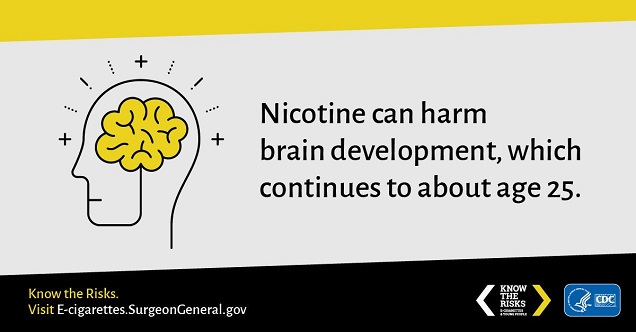
Neal Benowitz’s presentation also included some information on the all-too-common claim that “nicotine damages adolescent brains,” and Peter Hajek covered it in his talk too. While Benowitz didn’t get to discuss it during his talk (he was pressed for time) there was an illuminating discussion in the Q&A session that really drives home the issues with the claims.
Firstly, in Neal Benowitz’s slides for his talk (and in his answer to the question) he stressed that the evidence supporting the claims is all from animal models, and that “damage” is a bit of an exaggeration, and at best it should be termed as a delay of maturation. Peter Hajek’s point in his talk was that that the claim is always vague and doesn’t specify the specific type of damage being alleged. So he set to trying to pin Neal down to a specific, testable claim. Notably, in his talk he pointed out that there are many countries where teen smoking is almost entirely confined to boys, so these populations could serve as a “natural experiment” to test the claim.
Neal confirmed that you’d expect to see an increase in drug use in affected teens, and that accidents (for example, car accidents) would be more common. This was all Hajek was looking for, and he repeated these two points to himself as if turning them over in his mind.
The discussion didn’t go much further than this, but it’s obvious that if these claims were valid, we’d have seen a reduction in drug use (for example) alongside the decline in teen smoking. Additionally, those “natural experiment” countries would show huge gender divides in both car accidents and drug use, more so than in countries without the smoking gender disparity. This hasn’t been analyzed properly (which is telling in itself), but suffice it to say there is no obvious suggestion that this is the case.
8 – Advocates Should Support All Forms of THR

As part of the pre-GFN events on Thursday, there was a consumer advocacy alignment session which contained tons of great advice for vaping advocates, but one quote from Clive Bates really stuck out:
The key distinction is between combustion and non-combustion. As consumer advocates, you’re advocates for all consumers, not just yourself.
In short, Clive is pointing out that vaping advocates shouldn’t shun people who use smokeless tobacco, heat-not-burn or any other form of THR. The important thing is that people are reducing harm and that they have the choice to do so however works best for them. The more division there is in our community, the less useful we’ll be to smokers looking to reduce the risk of their nicotine use.
9 – Bad Science is Here to Stay – We Need a Better Approach
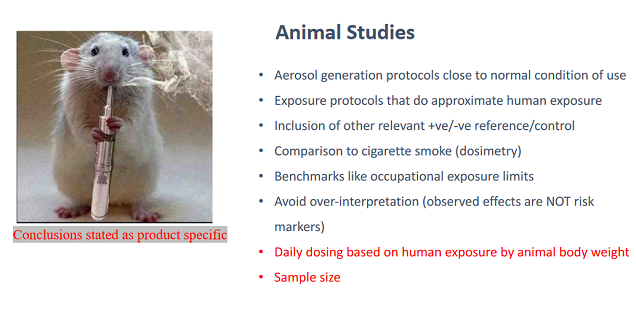
Bad science is an actual epidemic relevant to vaping. Shoddy studies have been coming out since vaping first took off, and there is no sign of it letting up. The results are distilled into press releases, the press releases are repeated by journalists who never so much as glance at the paper, and then the headlines are written and a new “fact” (with no basis in reality) becomes lodged in the public consciousness.
Fighting this is one of the big challenges of advocating for vaping. But there were several useful nuggets of advice over the weekend. The first is from Dave Sweanor, who praised the power of ridicule in tackling anti-vaping arguments. Rather than getting angry, pointing out the ludicrousness of the things that are said in good humor can win people over and make people promoting these arguments look as silly as they should.
Riccardo Polosa’s talk on “resurrecting rigor” in THR research pointed out that many of the errors in vaping research are repeated multiple times across several studies. For example, many animal studies use mice, but give them human-like doses of nicotine despite the massive difference in weight between mice and humans. Pointing out these recurring errors is a better approach than trying to take down every bad study individually.
10 – Vaping Works Because It’s Fun, But That’s Also Why It’s Controversial

Arguably the most important point from the whole weekend is the crucial reminder that vaping is fun, and that’s why it’s both successful and controversial. The New Nicotine Alliance’s flavor briefing is one example of vaping working because it’s actually enjoyable: people love trying new flavors, and finding one that you really like is often the key event that makes a vaper go from dual using to completely switching to vaping.
But as Ronald Dworkin pointed out in the Michael Russell oration, this is precisely why vaping has proved controversial among public health types. The fact that people want to use nicotine and actually enjoy it simply doesn’t gel with the public health narrative that people who smoke are hopeless slaves to addiction. It hasn’t been proven to be dangerous (and it’s unlikely to be seriously dangerous), so – as with light drinking – they can’t assume moral high-ground over anybody doing it and really don’t want it to take off as another pleasurable activity. But Dworkin said he sees the future of vaping as being something people simply enjoy, like a beer after a long day of work.
Let’s Keep Talking About Nicotine
So while GFN is over, it’s theme – it’s time to talk about nicotine – remains as relevant as ever. From the misunderstandings around the risks of nicotine to the confusion and ill-thought out proposals surrounding regulation, the key theme is a misunderstanding of nicotine. The more we talk about nicotine outside of the context of smoke, the more we will break the persistent association and bring some much-needed nuance into discussions of THR. It might be optimistic, but if it’s one thing the GFN left me with, it’s a revived sense of optimism that we can actually make a change.

